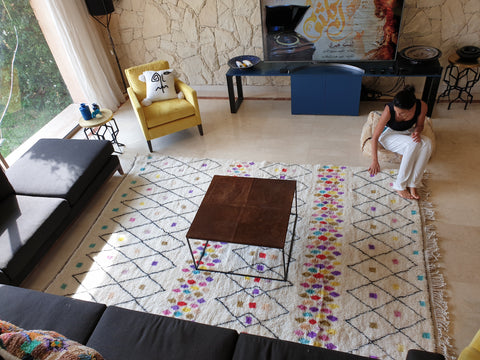
Why are Moroccan rugs so expensive?
Jakaa
The Price of Heritage: Unraveling Why Moroccan Rugs Command Their Value
Moroccan rugs, celebrated worldwide for their exquisite beauty and intricate craftsmanship, often come with a price tag that makes one wonder: Why are these rugs so expensive? This article seeks to unravel the factors that contribute to the high value of Moroccan rugs, providing insight into their pricing and the craftsmanship behind each piece.
The Craftsmanship Behind Each Rug
- Time-Intensive Process: Creating a Moroccan rug is a laborious process, often taking weeks or even months to complete. Each rug is handwoven by skilled artisans, a practice steeped in tradition and requiring immense skill and patience.
- Quality of Materials: Moroccan rugs are made from high-quality materials, typically fine wool from sheep bred in the Moroccan highlands. The wool is hand-spun, dyed with natural colors, and woven into intricate designs, all contributing to the rug's durability and unique texture.
Cultural and Artistic Significance
- Cultural Heritage: Each rug is not just a piece of decor but a representation of Morocco's rich cultural heritage. The designs, patterns, and weaving techniques are passed down through generations, encapsulating centuries of history and tradition.
- Artistic Expression: Moroccan rugs are often considered pieces of art. The weavers, mostly women from various Berber tribes, express their personal stories, beliefs, and heritage through the intricate designs and patterns of the rugs.
The Economics of Rug Making
- Direct from Artisans: Many Moroccan rugs are sourced directly from the artisans who create them. This direct sourcing ensures fair compensation for the weavers but also adds to the rug's cost due to the absence of middlemen.
- Limited Production: Unlike mass-produced rugs, the unique and handmade nature of Moroccan rugs means they are produced in limited quantities. This scarcity and uniqueness add to their value.
The Cost of Sustainability and Ethical Practices
- Sustainable and Ethical Manufacturing: The push for sustainable and ethical manufacturing practices in rug making also contributes to the cost. Ensuring fair wages, safe working conditions, and environmentally friendly practices are essential but can increase production costs.
The price of a Moroccan rug reflects not just its physical beauty but also its rich cultural significance, the craftsmanship involved, and the commitment to sustainable and ethical production practices. These rugs are more than a purchase; they are an investment in art, history, and a way of life. When you buy a Moroccan rug, you're not just acquiring a piece for your home; you're supporting a tradition that has been passed down for generations and helps sustain communities.
Check here our large collection of Vintage & New Moroccan berber rugs !



